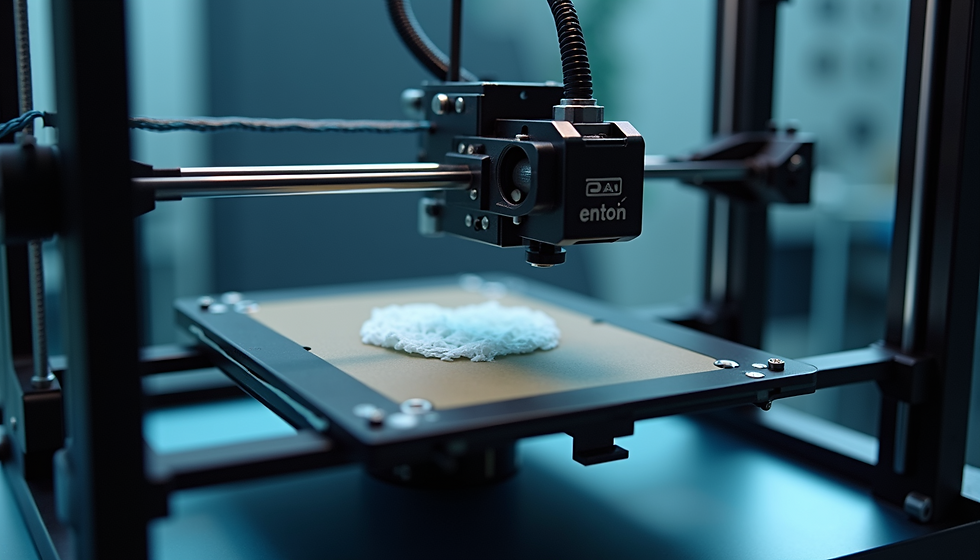Mastering 3D Printing Files for Seamless Results
- Mesh Mayhem
- Jul 8
- 3 min read
In the world of 3D printing, the quality of your output greatly depends on the mastery of your digital files. Understanding how to optimize these files can lead to seamless results, whether you're a hobbyist or a professional. In this blog post, we will explore the critical aspects of 3D file optimization, techniques to enhance your prints, and solutions to common problems associated with 3D printing files.
3D File Optimization
A significant portion of achieving high-quality prints revolves around properly optimizing your 3D files. This involves several stages, including selection, preparation, and refinement of your digital models. To start, ensure that your file is in a format compatible with your 3D printer—common formats include STL, OBJ, and AMF. Each format has its benefits, but choosing the right one for your specific printer will save you time and minimize errors.
Another essential step is tuning the settings in your slicing software. Factors such as layer height, infill density, and print speed can be adjusted to improve the overall quality of your print. For example, using a smaller layer height can yield finer details but may extend printing time. A balance needs to be struck; consider what aspects matter most for your project. Grants et al. (2021) note that adjusting these variables can significantly affect print fidelity.

Understanding Model Integrity
Another critical aspect of 3D file optimization is ensuring the integrity of your model. Files often contain errors such as non-manifold edges, flipped normals, or holes in the mesh. Tools like MeshLab and Microsoft 3D Builder can help you identify and fix these imperfections.
A common approach is to use the "Repair" function available in many modeling programs like Blender or Autodesk Meshmixer. Many models downloaded from the internet might also need repairs. Resources like mesh mayhem can provide helpful insights on how to effectively repair these models. The better your model's integrity, the less likely it is that you will encounter issues during the printing process.
Can You 3D Print Open Mesh?
3D printing open mesh structures can be quite challenging, primarily due to their lack of defined surfaces. However, with the right techniques, you can successfully achieve prints from open meshes. The key is to convert your open mesh into a watertight model. This can typically be done through the following steps:
Identify Gaps: Use software tools to highlight any gaps in your model that could lead to printing issues.
Fill Holes: Manually or automatically fill these gaps to create a complete surface.
Export and Slice: Once your mesh is watertight, export it, then slice the model using your preferred software.
It's crucial to understand that while open mesh printing is feasible, it may not always yield the most reliable results.

Choosing the Right Material
Material choice significantly impacts the performance and quality of your print. For instance, PLA is an easy-to-use filament suitable for beginner projects. However, if your project requires durability, ABS or PETG may be more appropriate. If you want to experiment with advanced materials, options like Nylon or TPU allow for flexibility and strength.
Each material comes with its own set of characteristics. For instance, PLA is biodegradable but can be fragile, while ABS is sturdy but requires a heated print bed. Conducting research on how different materials react during the printing process can help you select the best one for your needs.
In addition, consider the settings you need to adjust based on your material. Each filament requires its own temperature settings for optimal extrusion, which can require some trial and error to perfect.

Troubleshooting Common Issues
Even the best-prepared files may encounter issues during printing. Common problems include warping, layer separation, and stringing. Here are some potential solutions:
Warping: This occurs often with ABS. To combat it, ensure your print bed is properly calibrated and consider using an adhesive like glue stick or painter's tape on the build surface.
Layer Separation: This problem can arise from inconsistent temperatures. Ensure that your temperature settings are optimal for the material being used, keeping in mind that higher temperatures can enhance layer adhesion.
Stringing: This typically happens with materials like PLA. To reduce stringing, adjust your retraction settings in your slicer and experiment with drying your filament to eliminate moisture.
By keeping these common problems in mind and having a proactive attitude towards troubleshooting, you can ensure smoother results in your 3D printing journey.
Final Thoughts
Mastering the optimization of your 3D printing files is an ongoing process that involves understanding both the digital and physical aspects of printing. From file selection and integrity checking to material choice and troubleshooting, each component plays a vital role in your project's success.
As you explore the realm of 3D printing, utilize the myriad of resources available, from online forums to expert tutorials. Your commitment towards refining your skills will ultimately lead to more successful prints and a rewarding experience. Embrace the journey of mastering 3D file optimization, and reap the rewards of your dedication!




Comments